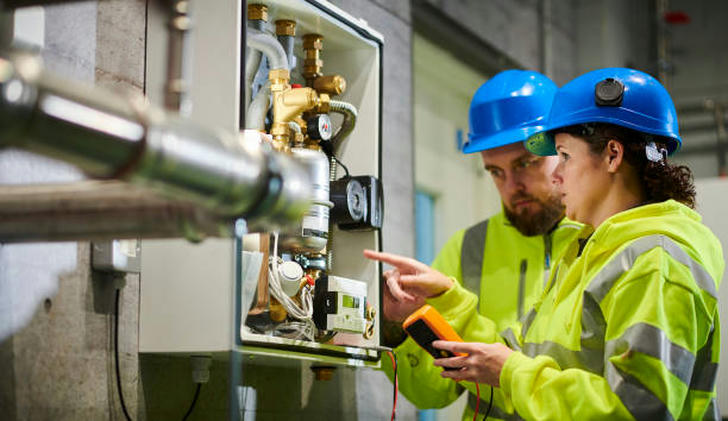The Rise of HVAC Technician Training in a Changing Industry
Why HVAC Technician Training Is Gaining Attention
In a world where indoor comfort has become a baseline expectation, HVAC systems are quietly working behind the scenes in nearly every building. Heating, ventilation, and air conditioning play a key role in homes, schools, offices, and hospitals. As these systems become more complex and environmentally sensitive, the demand for well-prepared technicians continues to shift. HVAC Technician Training has emerged as a central part of preparing individuals to understand, repair, and manage these intricate systems.

HVAC Technician Training introduces foundational knowledge and practical skills related to climate control systems. These programs cover how heating and cooling equipment works, how to troubleshoot problems, and how to perform routine maintenance. Beyond technical knowledge, some programs may include exposure to safety codes, customer communication, and hands-on tools usage. For many individuals, this training becomes the first meaningful step into a growing and increasingly technical field.
Entering a Field That Blends Manual Work and Technology
The modern HVAC technician is no longer just a mechanic with a wrench. Systems today often include computerized controls, energy-efficiency software, and specialized diagnostics. HVAC Technician Training reflects this evolution by combining traditional mechanical education with newer digital and environmental topics. Understanding airflow, refrigeration cycles, and electronic components can help make sense of how systems function in both small apartments and large commercial buildings.
Courses may include topics such as electrical theory, system design, refrigerants, and diagnostic tools. Some HVAC Technician Training paths take place in physical classrooms, while others are delivered through online or hybrid formats. Training timelines vary depending on the depth and structure of the program, with some lasting a few months and others extending into longer certificate or diploma tracks.
What HVAC Technician Training Typically Covers
While every program is different, most HVAC Technician Training efforts begin with basic system understanding—how furnaces heat, how AC units cool, and how ventilation ensures air quality. From there, the learning expands into diagnostics, repair techniques, and system installation. Some programs include lab sessions where students use real equipment to simulate field conditions.
Attention to safety, particularly with refrigerants and electricity, is also a part of many curricula. Learning to handle pressurized gases, operate electrical tools, and follow compliance codes forms a vital part of the training process. While textbooks and simulations provide background, many programs also emphasize real-world tasks, helping students visualize how theoretical knowledge applies to physical systems.
Adapting HVAC Technician Training to Modern Needs
HVAC Technician Training today often goes beyond traditional classroom learning. Some programs offer virtual simulations, smart system integrations, and even modules focused on emerging trends such as eco-friendly refrigerants or smart thermostats. As energy efficiency and indoor air quality grow in public focus, training is beginning to reflect these concerns more directly.
Programs may also adapt to different learning schedules. Some HVAC Technician Training is designed for those entering the workforce for the first time, while other options cater to individuals transitioning from related trades or occupations. Evening classes, weekend labs, and online modules can help those with family or job responsibilities gain technical skills without stepping away from daily obligations.
Career Growth and Long-Term Impact
Although HVAC Technician Training is not a guarantee of career advancement, it can serve as a stepping stone toward more technical responsibilities or licensing goals. Some individuals use training to enter the industry, while others build upon existing experience by gaining specialized credentials or certifications. Over time, hands-on experience often complements formal training to create a broader skill set.
The HVAC industry is affected by changes in building codes, energy policy, and equipment design. Technicians who start with a strong training foundation may find it easier to adapt as these changes unfold. Whether working in residential homes, commercial buildings, or industrial settings, those who have received HVAC Technician Training may be better equipped to understand the systems they maintain.
Training That Reflects Real-World Systems
In many ways, HVAC Technician Training mirrors the systems it teaches. It includes both structure and flexibility, combining technical content with practical application. Programs may emphasize how to work with a team, follow local regulations, or interpret manuals and wiring diagrams. As buildings become more intelligent, so too must the technicians who care for them.
Hands-on experience gained during training can make certain tasks feel more familiar when stepping into the field. Whether working on a rooftop unit or diagnosing an airflow issue in a basement, the foundational skills learned through HVAC Technician Training may help reduce hesitation and increase awareness of system behavior.
A Practical Investment in Technical Skills
HVAC Technician Training does not follow a single path. Some individuals attend trade schools, while others pursue community college certificates or apprenticeships. Each route offers different strengths, depending on the program’s focus and structure. What remains consistent is the goal: to prepare individuals with the ability to understand, assess, and work on climate control systems that support daily life.
As the world continues to rely on consistent indoor environments—whether in extreme heat or freezing temperatures—the people who maintain those systems often start with structured HVAC Technician Training. For those with an interest in mechanical systems and technical learning, it remains an accessible and rewarding starting point.
